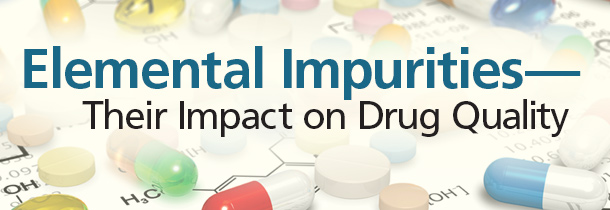
Updated January 31, 2023
Today, approximately 80% of all active pharmaceutical ingredients in medicines sold in the U.S. are manufactured in another part of the world. Whether it’s the manufacture of a prescription medicine, an over-the-counter drug or a dietary supplement, the production of pharmaceuticals and other health-related products truly has become a global enterprise.
While manufacturers have to ensure the quality and consistency of ingredients that go into a final pharmaceutical product, they must also employ measures for the proper control of unwanted impurities in drugs and drug ingredients.
Standards for the identity, strength, quality and purity of drug products and their ingredients are developed by the U.S. Pharmacopeial Convention (USP). These standards are enforceable by the U.S. Food and Drug Administration (FDA) as part of the overall safety net that helps to protect public health with regard to drug quality.
USP now has three elemental impurities reference standards along with General Chapters <232>-Limits and <233>-Procedures to help control amounts of elemental impurities in drug products.
USP Elemental Impurities Reference Standards include:
- Elemental Impurities Class 1 and 2A Mixture
- Elemental Impurities Class 2B Mixture
- Elemental Impurities Class 3 Mixture
Where elemental impurities come from
Elemental impurities include substances such as arsenic, cadmium, lead and mercury, which can appear in a final drug product through various routes. They can occur naturally as a result of their presence in the ground from which materials are sourced, be added intentionally as part of a product’s synthesis (e.g., as a catalyst in chemical reactions), or be introduced inadvertently (e.g., interactions with processing equipment during manufacturing).
Controlling for elemental impurities
There are concerns about the ability to control for quality—particularly when products and ingredients come from so many sources, both domestic and non-domestic.
Ultimately, manufacturers of drug products and ingredients are responsible for assuring conformance to FDA requirements and USP standards, no matter what the source of their materials. As more ingredients come from varied sources, applying modern, scientifically sound quality standards will help protect both manufacturers and—more importantly—patients.
A modernized standard
USP undergoes a continuous evaluation and revision of all its standards in order to update their scientific and public health relevance. While no specific event triggered the revision of elemental impurities standards, USP’s scientific experts concluded that these standards should be updated to incorporate modern analytical methods and current health information on these impurities.
In addition to coordinating its efforts with the FDA and industry, USP has worked closely with the International Conference on Harmonization (ICH) to ensure alignment of its new standards for elemental impurities with the ICH Q3D Guideline for Elemental Impurities. ICH brings together regulatory authorities and the pharmaceutical industry to discuss scientific and technical aspects of drug registration. Its mission is to achieve greater harmonization to ensure that safe, effective and high quality medicines are developed and registered in the most resource-efficient manner.
Click here for more information about USP’s standards for elemental impurities.
Kahkashan Zaidi, Ph.D., is a Team Lead, Senior Principal Scientist, USP General Chapters.


